Study of CdS/CdS Nanoparticles Thin Films Deposited by Soft Chemistry for Optoelectronic Applications
Abstract
1. Introduction
2. Materials and Methods
2.1. Materials
2.2. Deposition of CdS Thin Films
2.3. CdS Nanoparticles (NpS) Synthesis
2.4. Formation of CdS/CdS NpS Thin Films
2.5. Characterization of Films: CdS by CBD and CdS by CBD/CdS NpS by Spin Coating
3. Results and Discussions
3.1. UV-Vis Spectroscopy Analysis
3.2. X-ray Diffraction (XRD) Analysis
3.3. Raman Spectroscopy Analysis
3.4. Scanning Electron Microscopy (SEM) Analysis
3.5. Atomic Force Microscopy (AFM) Analysis
3.6. Electrical Conductivity
4. Conclusions
Supplementary Materials
Author Contributions
Funding
Data Availability Statement
Conflicts of Interest
References
- Khallaf, H.; Oladeji, I.O.; Chai, G.; Chow, L. Characterization of CdS thin films grown by chemical bath deposition using four different cadmium sources. Thin Solid Films 2008, 516, 7306–7312. [Google Scholar] [CrossRef]
- Saikia, D.; Phukan, P. Fabrication and evaluation of CdS/PbS thin film solar cell by chemical bath deposition technique. Thin Solid Films 2014, 562, 239–243. [Google Scholar] [CrossRef]
- Mane, R.S.; Lokhande, C.D. Chemical deposition method for metal chalcogenide thin films. Mater. Chem. Phys. 2000, 65, 1–31. [Google Scholar] [CrossRef]
- Li, J.-Y.; Li, Y.-H.; Qi, M.-Y.; Lin, Q.; Tang, Z.-R.; Xu, Y.-J. Selective Organic Transformations over Cadmium Sulfide-Based Photocatalysts. ACS Catal. 2020, 10, 6262–6280. [Google Scholar] [CrossRef]
- Metin, H.; Esen, R. Annealing studies on CBD grown CdS thin films. J. Cryst. Growth 2003, 258, 141–148. [Google Scholar] [CrossRef]
- Rondiya, S.; Rokade, A.; Gabhale, B.; Pandharkar, S.; Chaudhari, M.; Date, A.; Chaudhary, M.; Pathan, H.; Jadkar, S. Effect of Bath Temperature on Optical and Morphology Properties of CdS Thin Films Grown by Chemical Bath Deposition. Energy Procedia 2017, 110, 202–209. [Google Scholar] [CrossRef]
- Isik, M.; Gullu, H.H.; Delice, S.; Parlak, M.; Gasanly, N.M. Structural and temperature-dependent optical properties of thermally evaporated CdS thin films. Mater. Sci. Semicond. Process. 2019, 93, 148–152. [Google Scholar] [CrossRef]
- Yılmaz, S.; Ünverdi, A.; Tomakin, M.; Polat, İ.; Bacaksız, E. Surface modification of CBD-grown CdS thin films for hybrid solar cell applications. Optik 2019, 185, 256–263. [Google Scholar] [CrossRef]
- Beggas, A.; Benhaoua, B.; Attaf, A.; Aida, M.S. Growth study of CdS thin films deposited by chemical bath. Optik 2016, 127, 8423–8430. [Google Scholar] [CrossRef]
- Baines, T.; Zoppi, G.; Bowen, L.; Shalvey, T.P.; Mariotti, S.; Durose, K.; Major, J.D. Incorporation of CdSe layers into CdTe thin film solar cells. Sol. Energy Mater. Sol. Cells 2018, 180, 196–204. [Google Scholar] [CrossRef]
- Qasrawi, A.F.; Abed, T.Y. Structural and optoelectronic properties of CdS/Y/CdS thin films. Thin Solid Films 2019, 679, 72–78. [Google Scholar] [CrossRef]
- Sonker, R.K.; Yadav, B.C.; Gupta, V.; Tomar, M. Synthesis of CdS nanoparticle by sol-gel method as low temperature NO2 sensor. Mater. Chem. Phys. 2020, 239, 121975. [Google Scholar] [CrossRef]
- Al-Fouadi, A.H.A.; Hussain, D.H.; Rahim, H.A. Surface topography study of CdS thin film nanostructure synthesized by CBD. Optik 2017, 131, 932–940. [Google Scholar] [CrossRef]
- Fergus, J.W. Perovskite oxides for semiconductor-based gas sensors. Sens. Actuators B Chem. 2007, 123, 1169–1179. [Google Scholar] [CrossRef]
- Sharma, S.; Dutta, V.; Raizada, P.; Hosseini-Bandegharaei, A.; Singh, P.; Nguyen, V.-H. Tailoring cadmium sulfide-based photocatalytic nanomaterials for water decontamination: A review. Environ. Chem. Lett. 2021, 19, 271–306. [Google Scholar] [CrossRef]
- Mamiyev, Z.; Balayeva, N.O. Metal Sulfide Photocatalysts for Hydrogen Generation: A Review of Recent Advances. Catalysts 2022, 12, 1316. [Google Scholar] [CrossRef]
- Chander, S.; Dhaka, M.S. Optical and structural constants of CdS thin films grown by electron beam vacuum evaporation for solar cells. Thin Solid Films 2017, 638, 179–188. [Google Scholar] [CrossRef]
- Martínez-Landeros, V.H.; Hernandez-Como, N.; Gutierrez-Heredia, G.; Quevedo-Lopez, M.A.; Aguirre-Tostado, F.S. Structural, chemical and electrical properties of CdS thin films fabricated by pulsed laser deposition using varying background gas pressure. Thin Solid Films 2019, 682, 24–28. [Google Scholar] [CrossRef]
- Lu, C.; Zhang, L.; Zhang, Y.; Liu, S.; Liu, G. Fabrication of CdS/CdSe bilayer thin films by chemical bath deposition and electrodeposition, and their photoelectrochemical properties. Appl. Surf. Sci. 2014, 319, 278–284. [Google Scholar] [CrossRef]
- Deshmukh, S.G.; Kheraj, V.; Panchal, A.K. Preparation of Nanocrystalline CdS Thin Film by Successive Ionic Layer Adsorption and Reaction (SILAR) Method. Mater. Today Proc. 2018, 5, 21322–21327. [Google Scholar] [CrossRef]
- Aboud, A.A.; Mukherjee, A.; Revaprasadu, N.; Mohamed, A.N. The effect of Cu-doping on CdS thin films deposited by the spray pyrolysis technique. J. Mater. Res. Technol. 2019, 8, 2021–2030. [Google Scholar] [CrossRef]
- Rondiya, S.; Rokade, A.; Funde, A.; Kartha, M.; Pathan, H.; Jadkar, S. Synthesis of CdS thin films at room temperature by RF-magnetron sputtering and study of its structural, electrical, optical and morphology properties. Thin Solid Films 2017, 631, 41–49. [Google Scholar] [CrossRef]
- Ren, T.; Lei, Z.; Luan, G.; Jia, G.; Zhang, J.; Yu, R.; Li, C. Fabrication of CdS–ZnS layered thin films by hydrothermal seeded growth method. Thin Solid Films 2006, 513, 99–102. [Google Scholar] [CrossRef]
- Vigil-Galán, O.; Pulgarín, F.A.; Cruz-Gandarilla, F.; Courel, M.; Villarreal-Ruiz, G.; Sánchez, Y.; Jiménez-Olarte, D.; Saucedo, E. Optimization of CBD-CdS physical properties for solar cell applications considering a MIS structure. Mater. Des. 2016, 99, 254–261. [Google Scholar] [CrossRef]
- Ouafi, M.; Jaber, B.; Laanab, L. Low temperature CBD growth of CdS on flexible substrates: Structural and optical characterization. Matter. Superlattices Microstruct. 2019, 129, 212–219. [Google Scholar] [CrossRef]
- Manikkoth, S.T.; Thulasi, K.M.; Palantavida, S.; Kizhakkekilikoodayil Vijayan, B. In-situ synthesis of titania nanosheet—CdS nanoparticle composites by combined hydrothermal—selective adsorption and reaction for enhanced photocatalytic activity. Mater. Today Proc. 2021, 41, 660–664. [Google Scholar] [CrossRef]
- Dolai, S.; Maiti, P.; Ghorai, A.; Bhunia, R.; Kumar, P.; Ghosh, D. Exfoliated Molybdenum Disulfide-Wrapped CdS Nanoparticles as a Nano-Heterojunction for Photo-Electrochemical Water Splitting. ACS Appl. Mater. Interfaces. 2021, 13, 438–448. [Google Scholar] [CrossRef]
- Zhu, J.; Zhou, M.; Xu, J.; Liao, X. Preparation of CdS and ZnS nanoparticles using microwave irradiation. Mater. Lett. 2001, 47, 25–29. [Google Scholar] [CrossRef]
- Fernando, D.; Khan, M.; Vasquez, Y. Control of the crystalline phase and morphology of CdS deposited on microstructured surfaces by chemical bath deposition. Mater. Sci. Semicond. Process. 2015, 30, 174–180. [Google Scholar] [CrossRef]
- Moualkia, H.; Hariech, S.; Aida, M.S. Structural and optical properties of CdS thin films grown by chemical bath deposition. Thin Solid Films 2009, 518, 1259–1262. [Google Scholar] [CrossRef]
- Mir, F.A.; Chattarjee, I.; Dar, A.A.; Asokan, K.; Bhat, G.M. Preparation and characterizations of cadmium sulfide nanoparticles. Optik 2015, 126, 1240–1244. [Google Scholar] [CrossRef]
- Singh, V.; Chauhan, P. Structural and optical characterization of CdS nanoparticles prepared by chemical precipitation method. J. Phys. Chem. Solids 2009, 70, 1074–1079. [Google Scholar] [CrossRef]
- Solanki, R.G.; Rajaram, P. Structural, optical and morphological properties of CdS nanoparticles synthesized using hydrazine hydrate as a complexing agent. Nano-Struct. Nano-Objects 2017, 12, 157–165. [Google Scholar] [CrossRef]
- Khurana, K.; Rani, N.; Jaggi, N. Enhanced photoluminescence of CdS quantum dots thin films on Cu and Ag nanoparticles. Thin Solid Films 2021, 737, 138928. [Google Scholar] [CrossRef]
- Lee, J.; Lee, J.; Park, J.; Lee, S.-E.; Lee, E.G.; Im, C.; Lim, K.-H.; Kim, Y.S. Solution-Grown Homojunction Oxide Thin-Film Transistors. ACS Appl. Mater. Interfaces 2019, 11, 4103–4110. [Google Scholar] [CrossRef]
- Qian, H.; Liu, Z.; Ya, J.; Xin, Y.; Ma, J.; Wu, X. Construction homojunction and co-catalyst in ZnIn2S4 photoelectrode by Co ion doping for efficient photoelectrochemical water splitting. J. Alloys Compd. 2021, 867, 159028. [Google Scholar] [CrossRef]
- Zhou, Y.; Li, Y.; Luo, J.; Li, D.; Liu, X.; Chen, C.; Song, H.; Ma, J.; Xue, D.-J.; Yang, B.; et al. Buried homojunction in CdS/Sb2 Se 3 thin film photovoltaics generated by interfacial diffusion. Appl. Phys. Lett. 2017, 111, 013901. [Google Scholar] [CrossRef]
- Zhang, S.; Liu, Z.; Chen, D.; Guo, Z.; Ruan, M. Oxygen vacancies engineering in TiO2 homojunction/ZnFe-LDH for enhanced photoelectrochemical water oxidation. Chem. Eng. J. 2020, 395, 125101. [Google Scholar] [CrossRef]
- Palma-Soto, E.; de La Luz Mota-González, M.; Luque-Morales, P.A.; Carrillo-Castillo, A. Determination of photocatalytic activity for the system: Cds chemical bath deposited thin films coated with TiO2 nps. Chalcogenide Lett. 2021, 18, 47–58. [Google Scholar] [CrossRef]
- Chawla, P.; Sharma, G.; Lochab, S.P.; Singh, N. Photoluminescence and optical characterization of CdS nanoparticles prepared by solid-state method at low temperature. Radiat. Eff. Defects Solids 2009, 164, 755–762. [Google Scholar] [CrossRef]
- Tec-Yam, S.; Patiño, R.; Oliva, A.I. Chemical bath deposition of CdS films on different substrate orientations. Curr. Appl. Phys. 2011, 11, 914–920. [Google Scholar] [CrossRef]
- Adikaram, K.K.M.B.B.; Kumarage, W.G.C.; Varga, T.; Dassanayake, B.S. Improvement of the Photo-Activity of CdS Thin Films Using TX-100. J. Electron. Mater. 2019, 48, 4424–4431. [Google Scholar] [CrossRef]
- Hodes, G. Semiconductor and ceramic nanoparticle films deposited by chemical bath deposition. Phys. Chem. Chem. Phys. 2007, 9, 2181. [Google Scholar] [CrossRef]
- Salas-Villasenor, A.L.; Mejia, I.; Sotelo-Lerma, M.; Gnade, B.E.; Quevedo-Lopez, M.A. Performance and stability of solution-based cadmium sulfide thin film transistors: Role of CdS cluster size and film composition. Appl. Phys. Lett. 2012, 101, 262103. [Google Scholar] [CrossRef]
- Oladeji, I.; Chow, L.; Liu, J.; Chu, W.; Bustamante, A.N.; Fredricksen, C.; Schulte, A. Comparative study of CdS thin films deposited by single, continuous, and multiple dip chemical processes. Thin Solid Films 2000, 359, 154–159. [Google Scholar] [CrossRef]
- Carrillo-Castillo, A.; Rivas-Valles, B.G.; Castillo, S.J.; Ramirez, M.M.; Luque-Morales, P.A. New Formulation to Synthetize Semiconductor Bi2S3 Thin Films Using Chemical Bath Deposition for Optoelectronic Applications. Symmetry 2022, 14, 2487. [Google Scholar] [CrossRef]
- Carrillo, A.; Mota, M.L.; Carrasco, L.A.; Mireles, M.C.; Aguirre, F. Low-temperature synthesis of cds and zns nanoparticles by solution method using an anionic surfactant. Chalcogenide Lett. 2012, 15, 565–571. [Google Scholar]
- Mamiyev, Z.Q.; Balayeva, N.O. Synthesis and characterization of CdS nanocrystals and maleic anhydride octene-1 copolymer nanocomposite materials by the chemical in-situ technique. Compos. Part B Eng. 2015, 68, 431–435. [Google Scholar] [CrossRef]
- Samiyammal, P.; Parasuraman, K.; Balu, A.R. Improved magnetic and photocatalytic properties of spray deposited (Li+Co) codoped CdS thin films. Superlattices Microstruct. 2019, 129, 28–39. [Google Scholar] [CrossRef]
- Ximello Quiebras, J.; Contreras Puente, G.; Rueda Morales, G.; Vigil, O.; Santana Rodriguez, G.; Morales Acevedo, A. Properties of CdS thin films grown by CBD as a function of thiourea concentration. Sol. Energy Mater. Sol. Cells 2006, 90, 727–732. [Google Scholar] [CrossRef]
- Kouhestany, R.H.; Azizi, S.N.; Shakeri, P.; Rahmani, S. Sensitive Determination of Cetirizine Using CdS Quantum dots as Oxidase Mimic-mediated Chemiluminescence of Sulfite. Int. Curr. Pharm. J. 2016, 5, 59–62. [Google Scholar] [CrossRef]
- Najm, A.; Hasanain, S.; Hasan, S.; Aisha, S. An in-depth analysis of nucleation and growth mechanism of CdS thin film synthesized by chemical bath deposition (CBD) technique. Sci. Rep. 2020, 17, 537–547. [Google Scholar] [CrossRef] [PubMed]
- Narayanan, K.L.; Vijayakumar, K.P.; Nair, K.G.M.; Sundarakkannan, B.; Narasimha Rao, G.V.; Kesavamoorthy, R. Raman scattering and optical absorption studies of Ar+ implanted CdS thin films. Nucl. Instrum. Methods Phys. Res. Sect. B Beam Interact. Mater. Atoms. 1997, 132, 61–67. [Google Scholar] [CrossRef]
- Moloto, N.; Revaprasadu, N.; Musetha, P.L.; Moloto, M.J. The Effect of Precursor Concentration, Temperature and Capping Group on the Morphology of CdS Nanoparticles. J. Nanosci. Nanotechnol. 2009, 9, 4760–4766. [Google Scholar] [CrossRef]
- Qutub, N.; Pirzada, B.M.; Umar, K.; Sabir, S. Synthesis of CdS nanoparticles using different sulfide ion precursors: Formation mechanism and photocatalytic degradation of Acid Blue-29. J. Environ. Chem. Eng. 2016, 4, 808–817. [Google Scholar] [CrossRef]
- Iacomi, F.; Purica, M.; Budianu, E.; Macovei, D. Synthesis of the transparent and conductive CdS thin films for optoelectronic devices applications. In Proceedings of the CAS 2005 Proceedings. 2005 International Semiconductor Conference, Sinaia, Romania, 3–5 October 2005; IEEE: Piscataway Township, NJ, USA, 2005; Volume 1, pp. 161–164. [Google Scholar]
- Patra, P.; Kumar, R.; Mahato, P.K.; Bhakat, C.; Kumar, C. Structural, morphological, and optical properties of CdS and nickel doped CdS nanocrystals synthesized via a bottom-up approach. Mater. Today Proc. 2022, 56, 811–818. [Google Scholar] [CrossRef]
- Emeline, A.V.; Rudakova, A.V.; Ryabchuk, V.K.; Serpone, N. Recent advances in composite and heterostructured photoactive materials for the photochemical conversion of solar energy. Curr. Opin. Green Sustain. Chem. 2022, 34, 100588. [Google Scholar] [CrossRef]
- Langford, J.I.; Wilson, A.J.C. Scherrer after sixty years: A survey and some new results in the determination of crystallite size. J. Appl. Crystallogr. 1978, 11, 102–113. [Google Scholar] [CrossRef]
- Chuu, D.S.; Dai, C.M.; Hsieh, W.F.; Tsai, C.T. Raman investigations of the surface modes of the crystallites in CdS thin films grown by pulsed laser and thermal evaporation. J. Appl. Phys. 1991, 69, 8402–8404. [Google Scholar] [CrossRef]
- Trajic, J.; Gilic, M.; Romcevic, N.; Romcevic, M.; Stanisic, G.; Hadzic, B.; Petrovic, M.; Yahia, Y.S. Raman spectroscopy of optical properties in CdS thin films. Sci. Sinter. 2015, 47, 145–152. [Google Scholar] [CrossRef]
- Ren, J.; Stagi, L.; Malfatti, L.; Garroni, S.; Enzo, S.; Innocenzi, P. Boron Nitride–Titania Mesoporous Film Heterostructures. Langmuir 2021, 37, 5348–5355. [Google Scholar] [CrossRef] [PubMed]
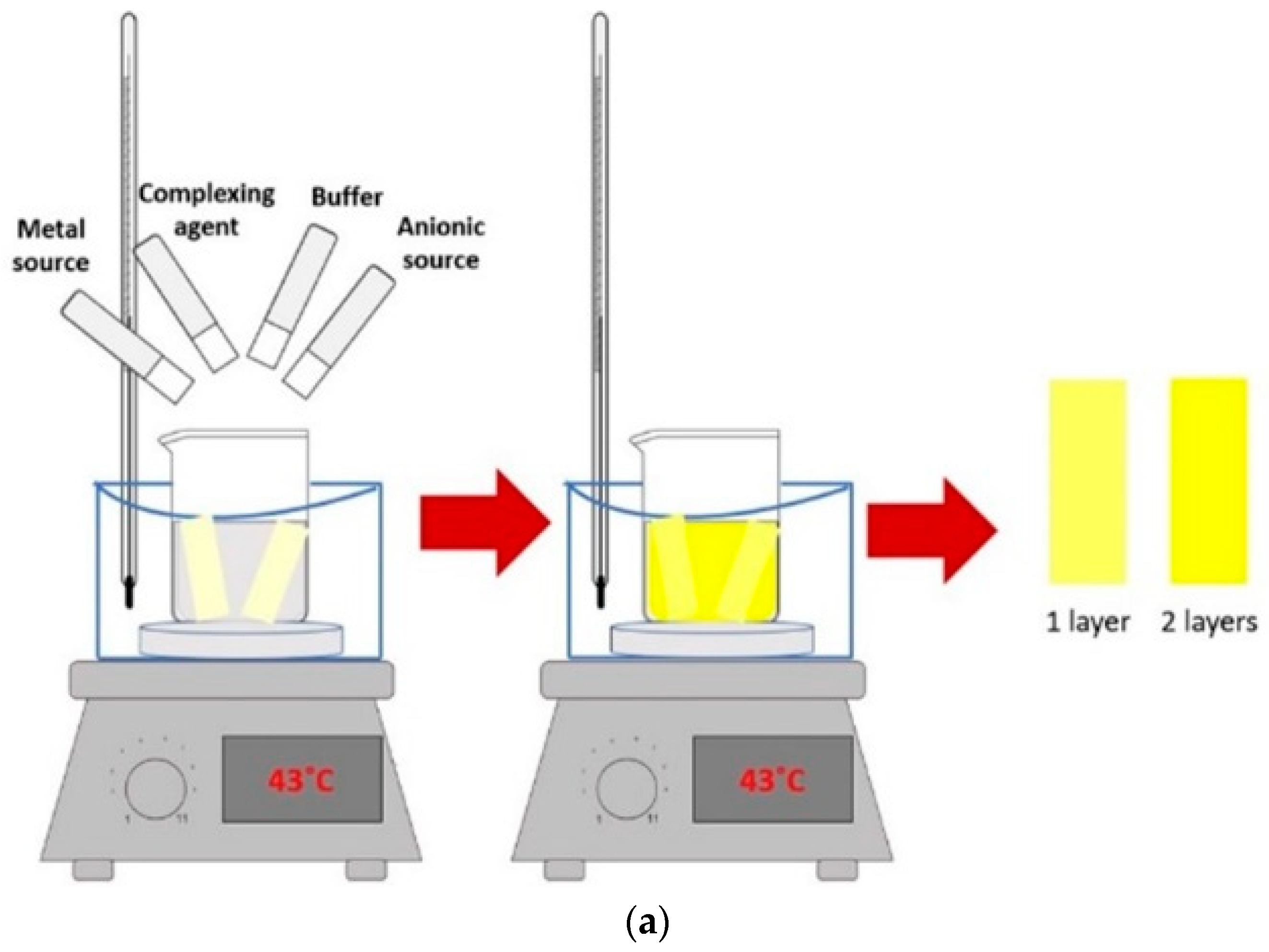
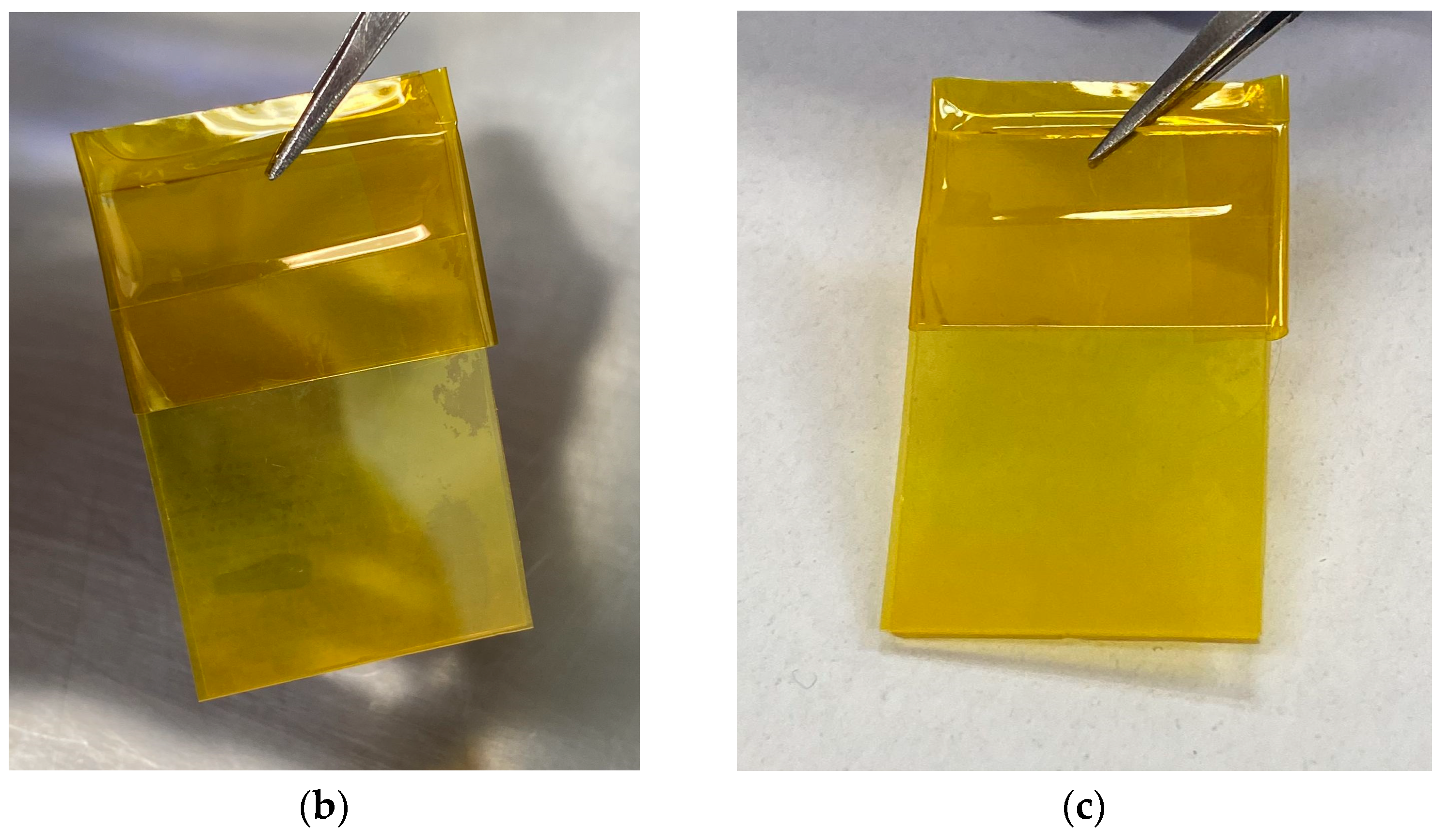
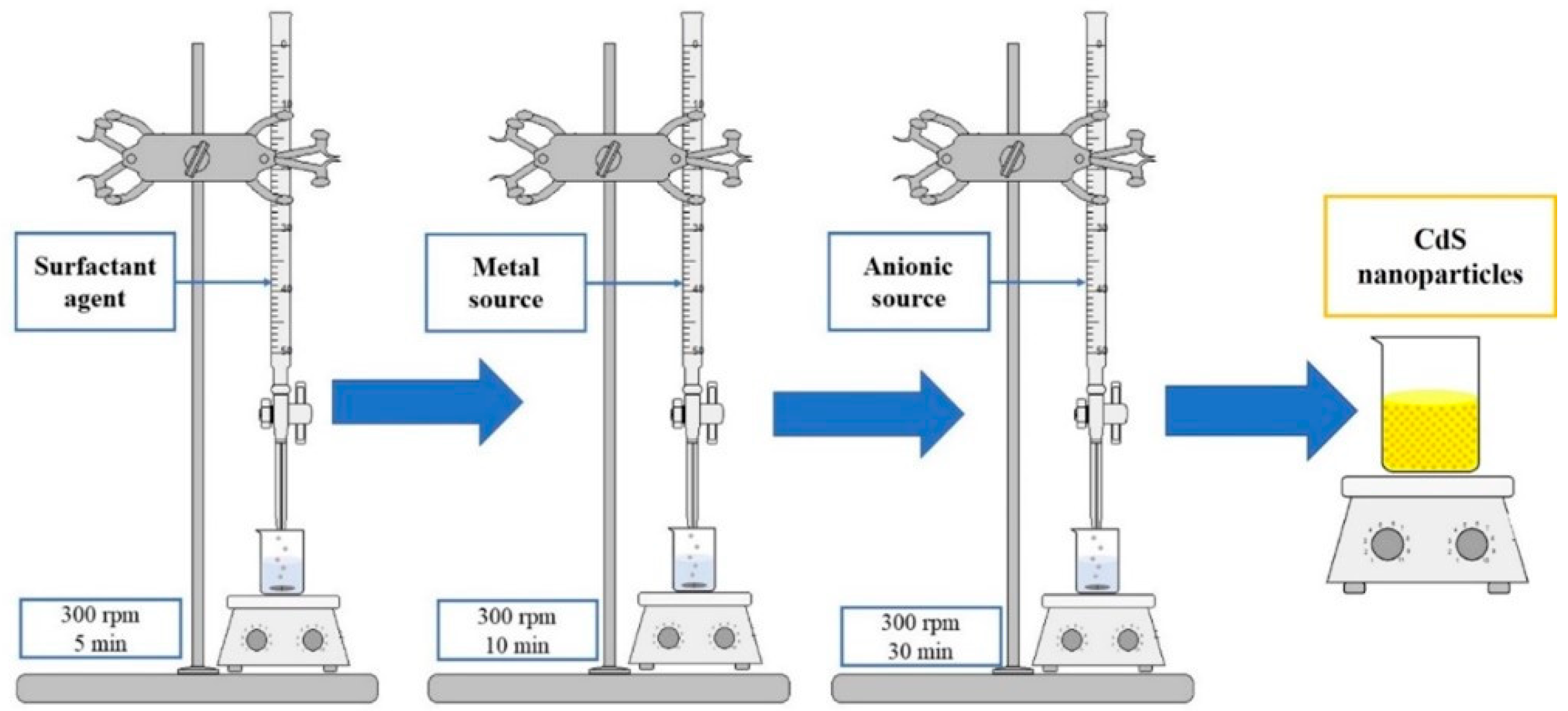
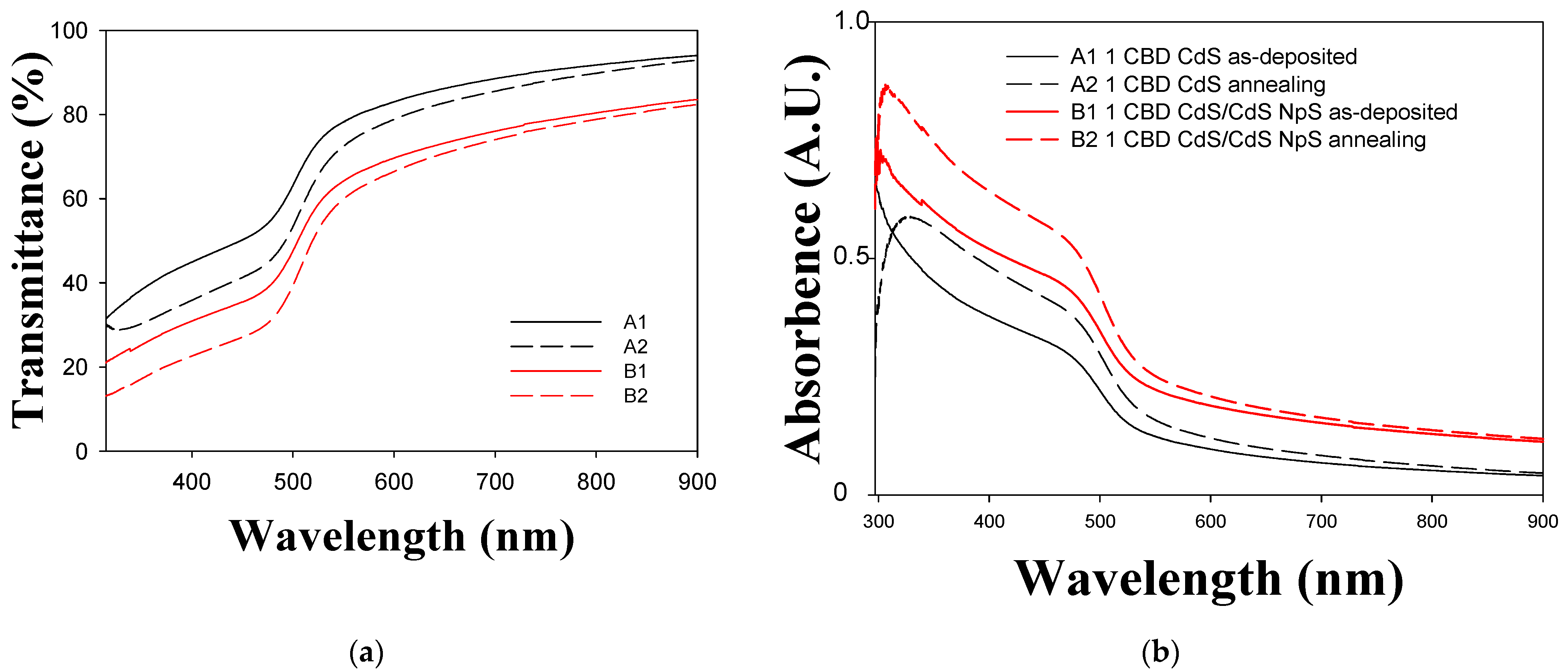
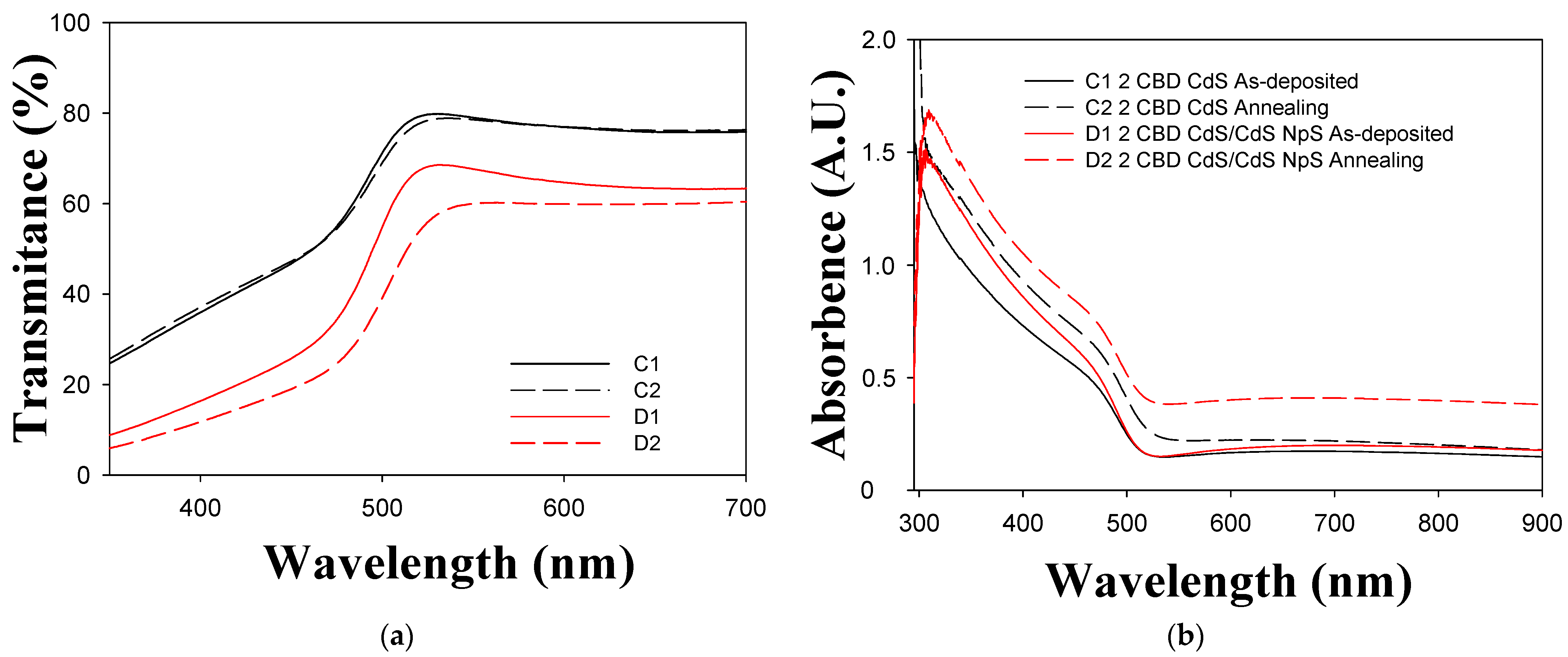
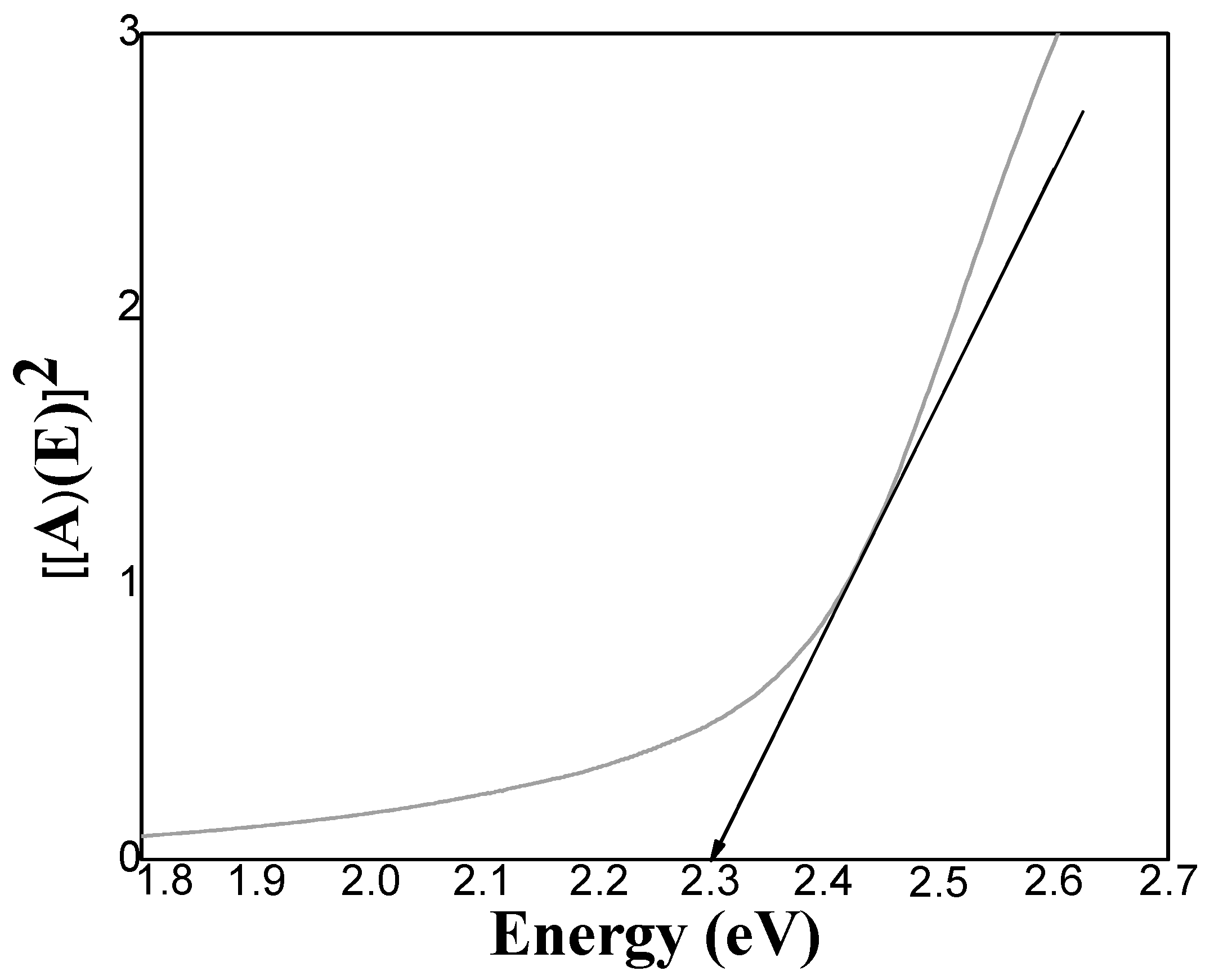
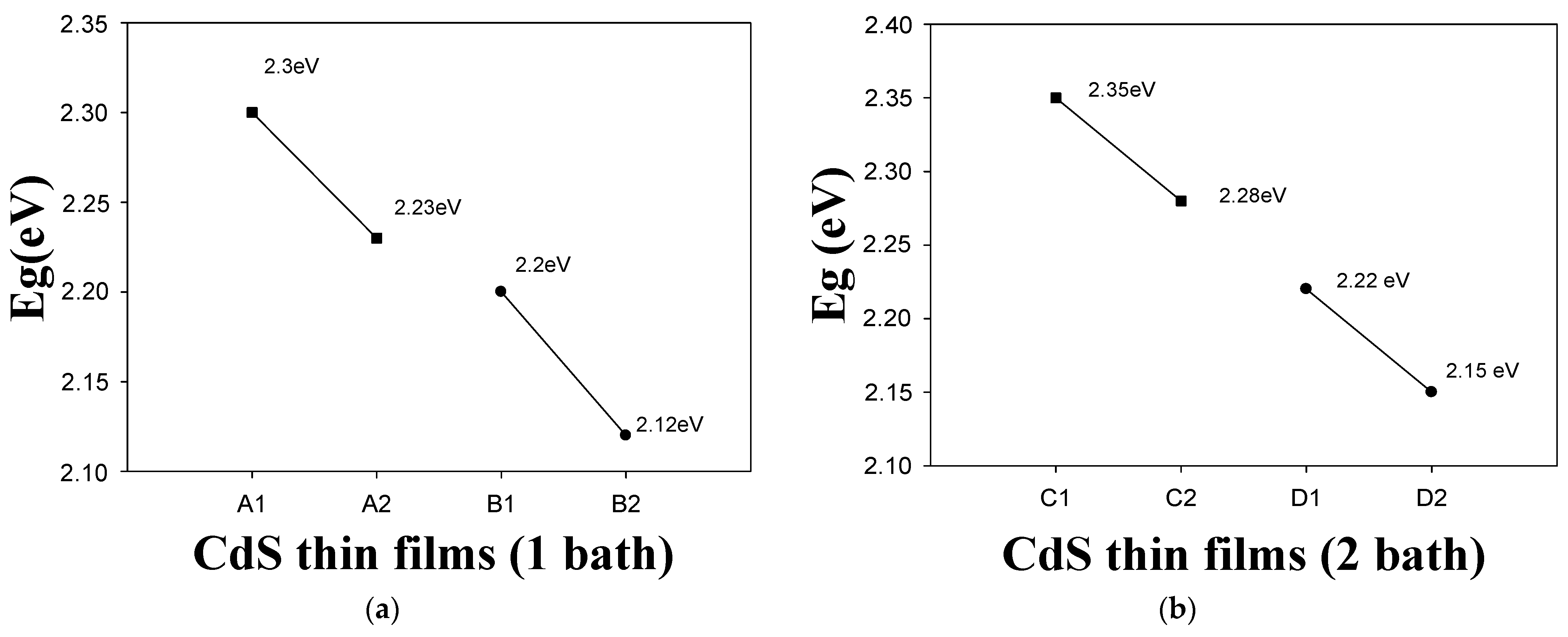


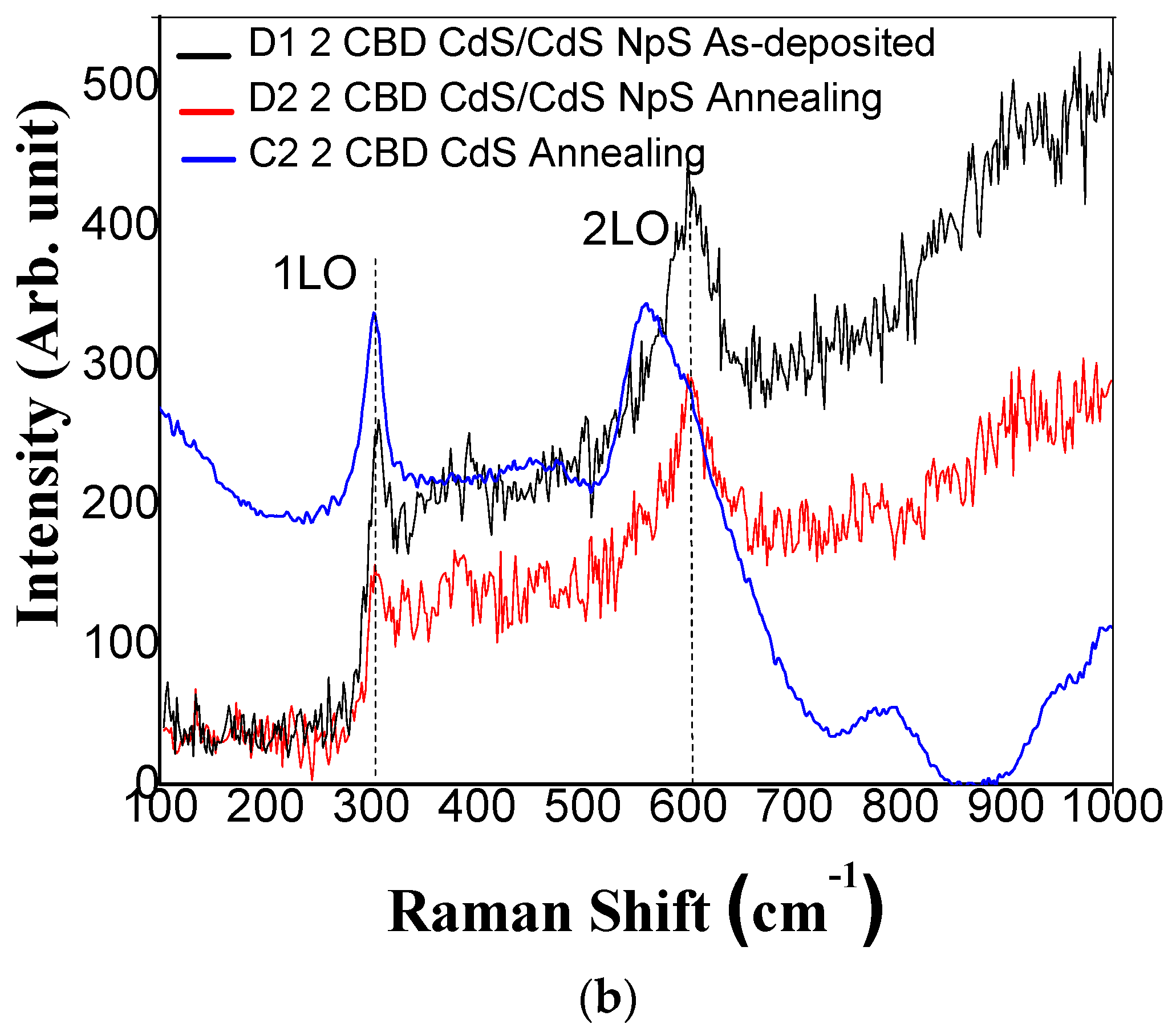
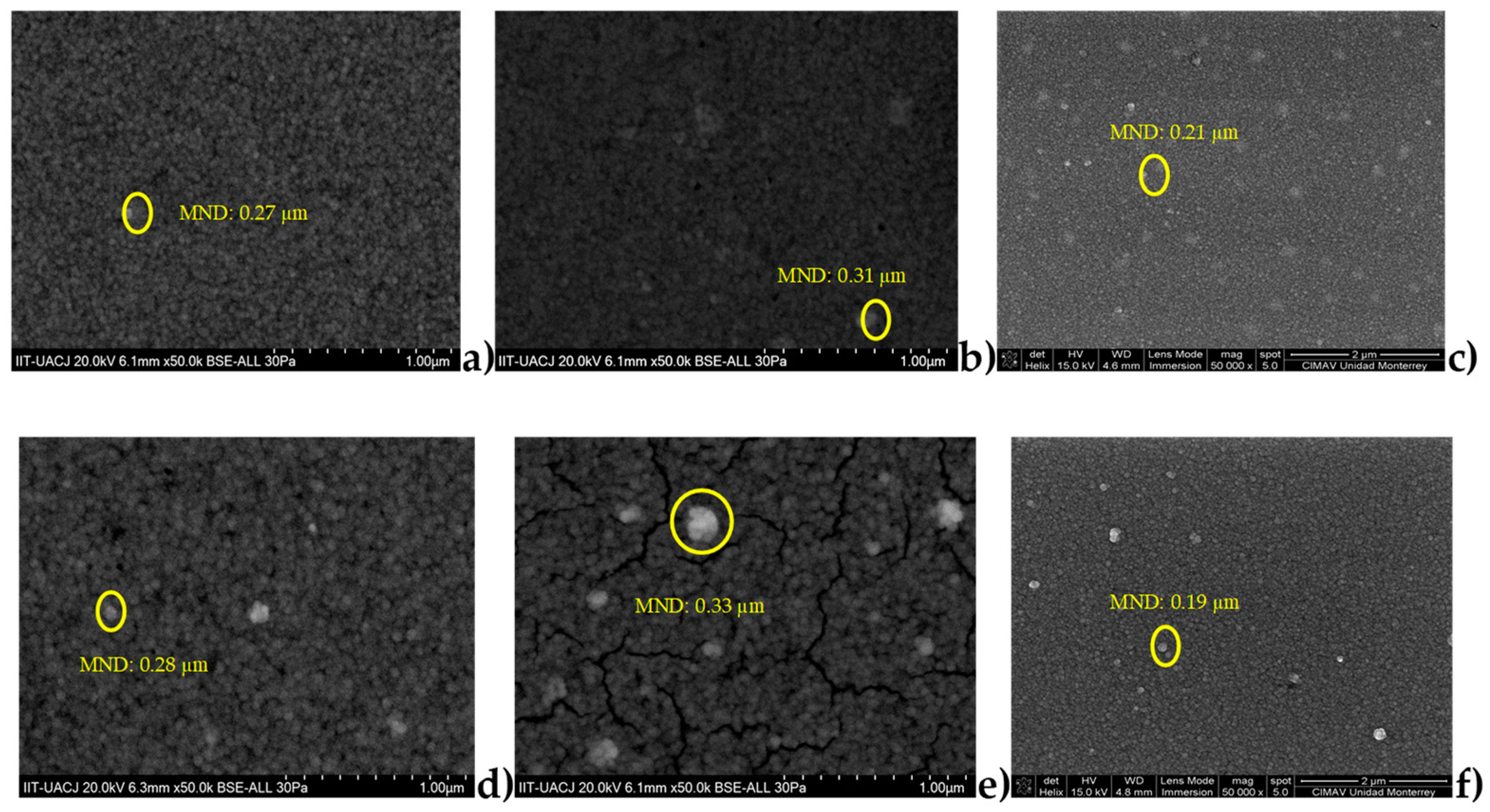
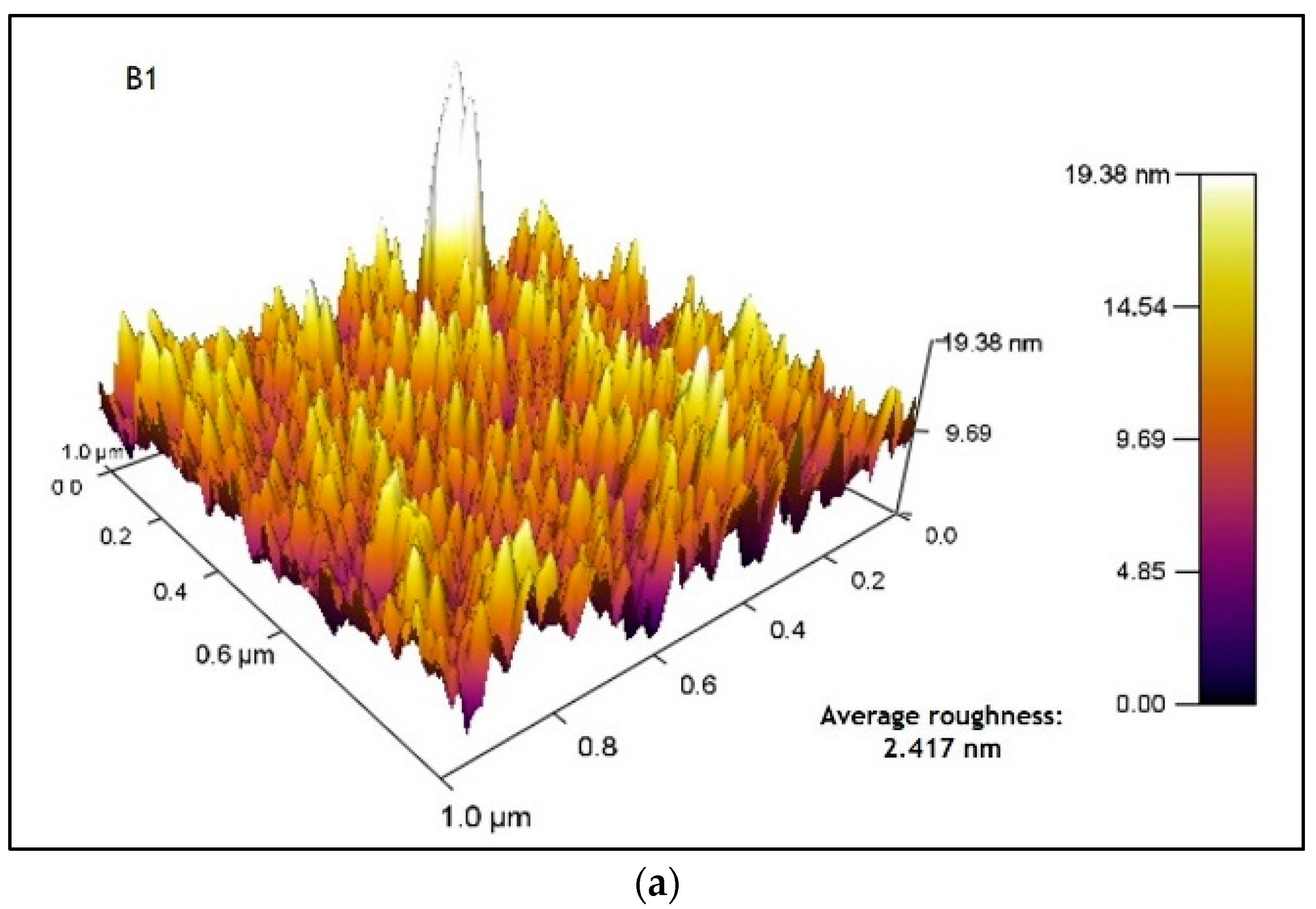
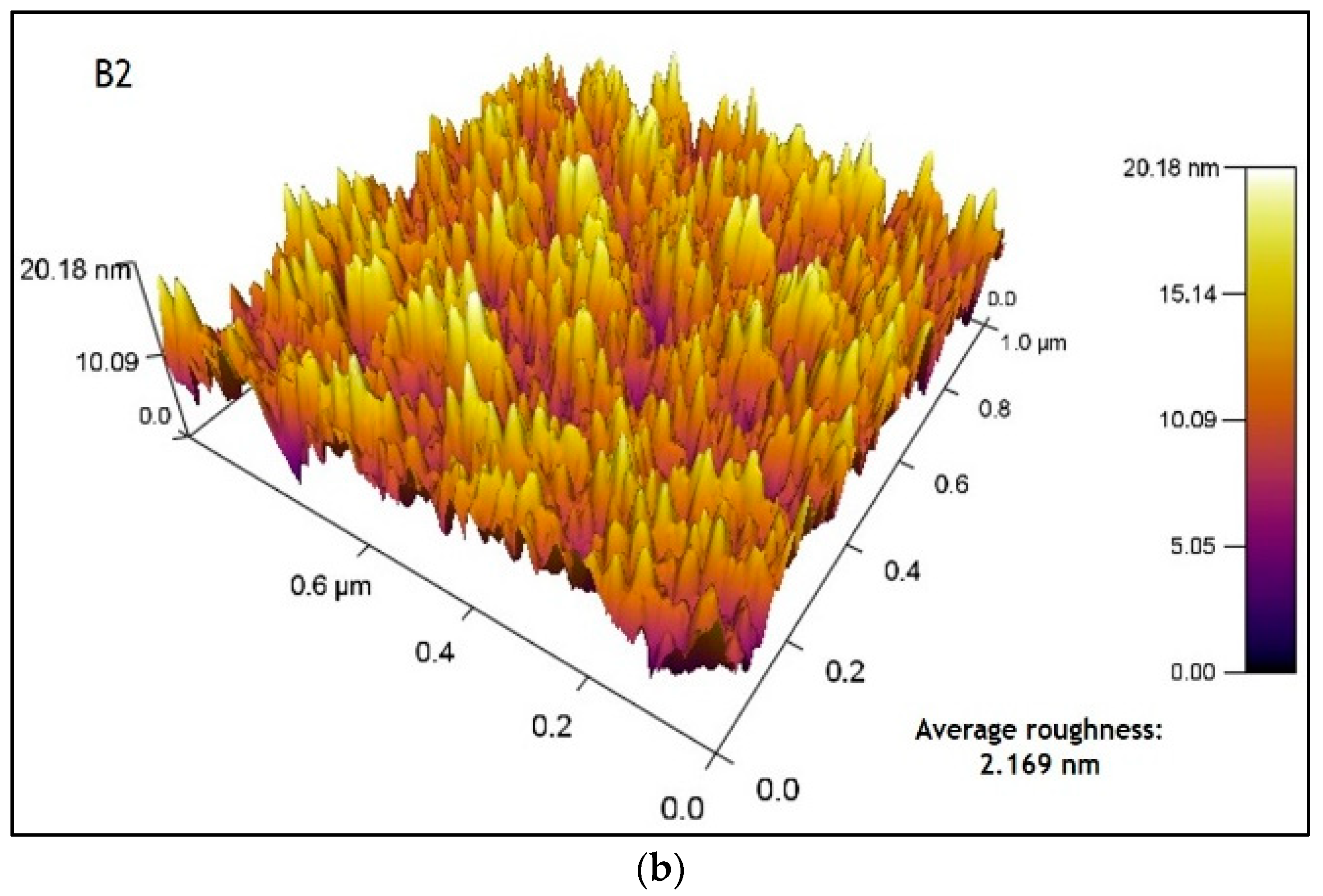
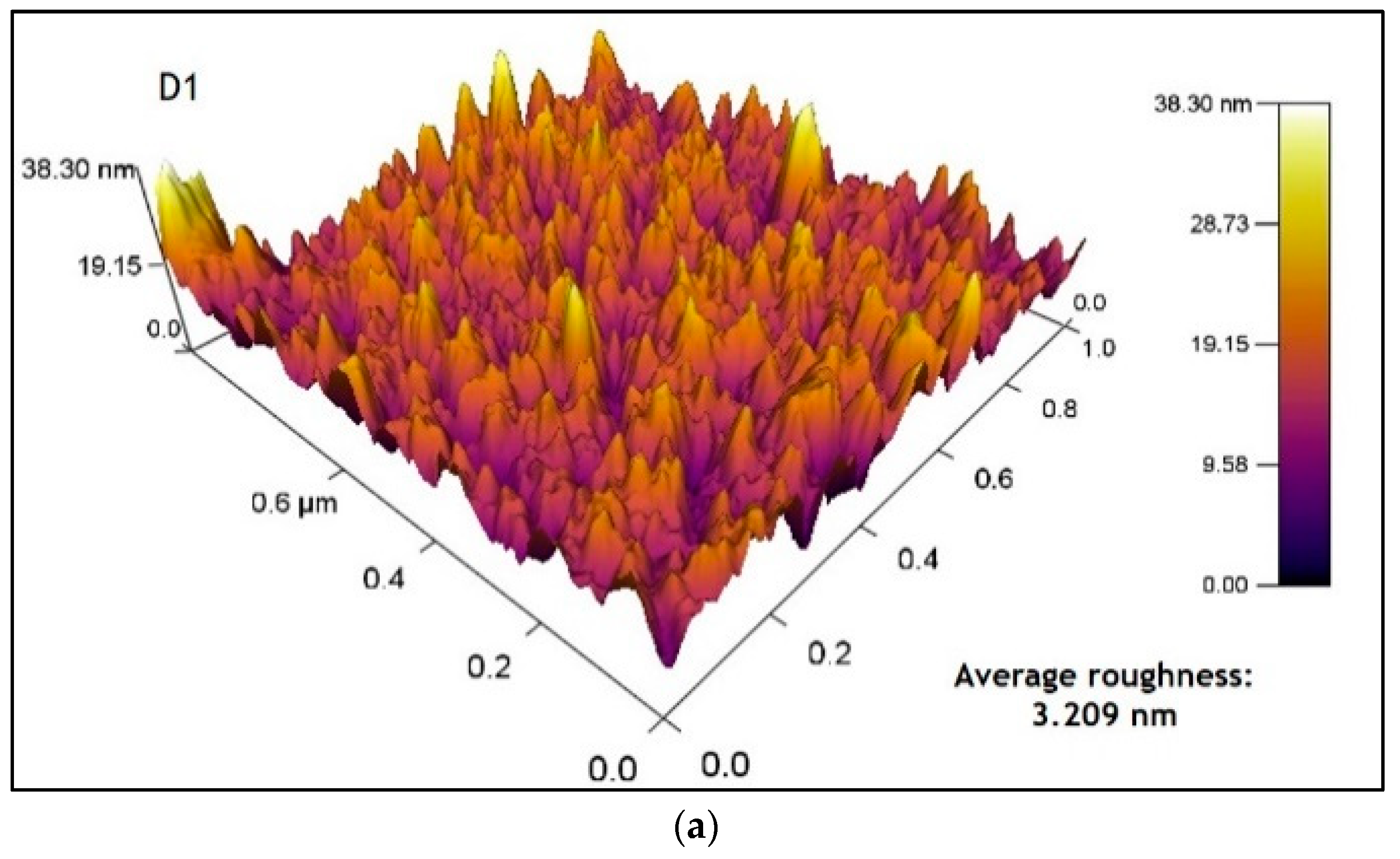
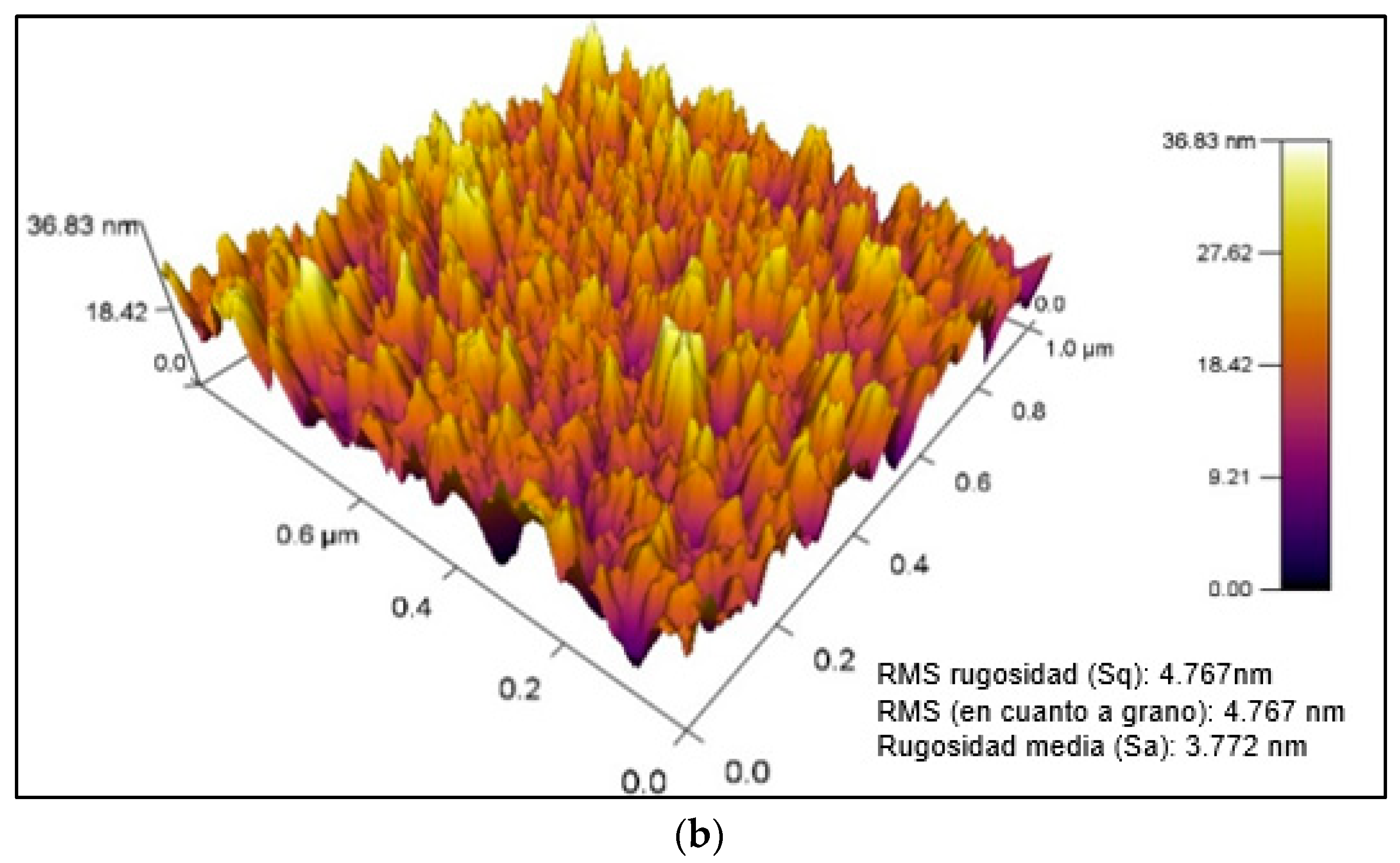
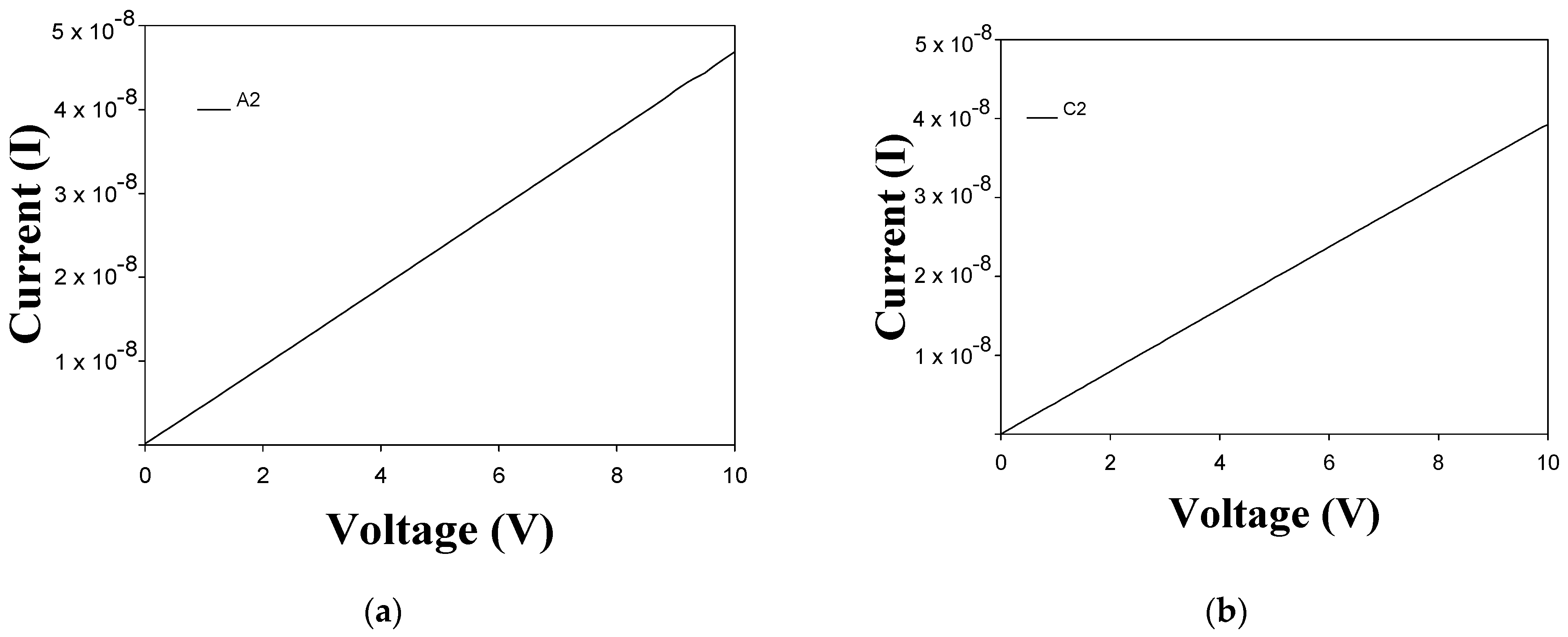
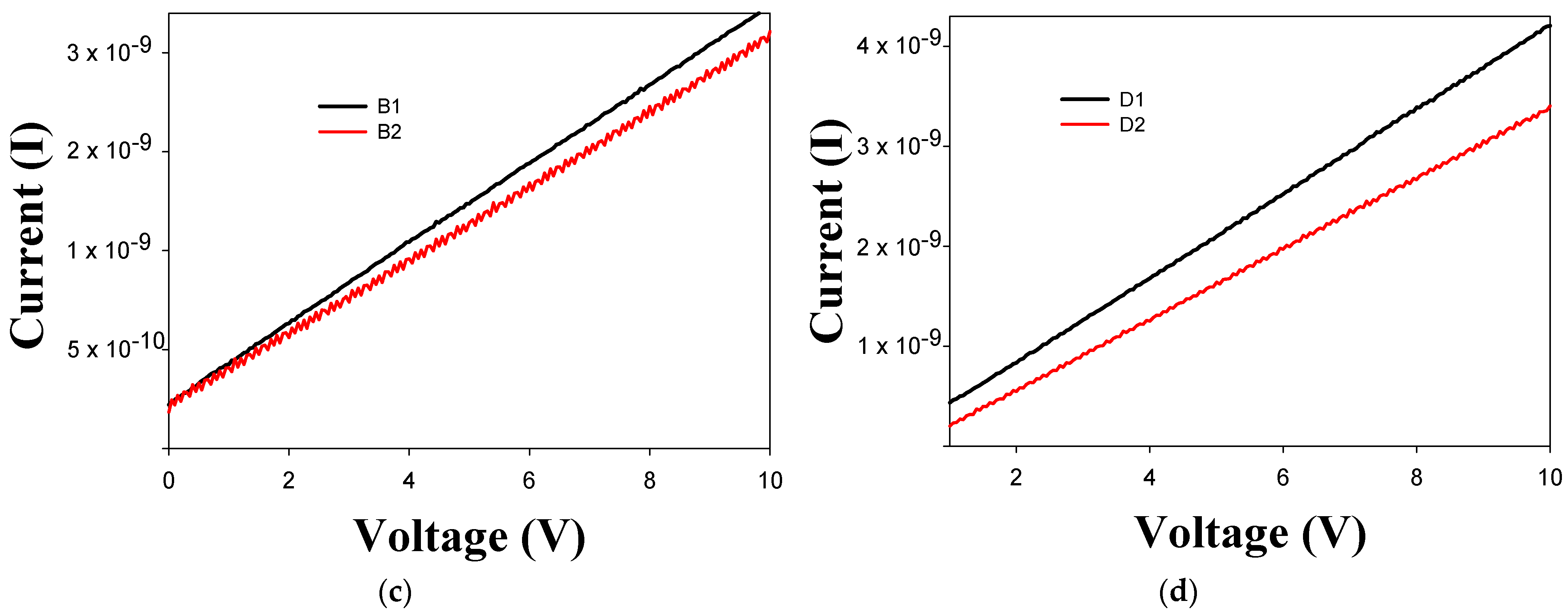
| Name of Samples | Description | Name of Samples | Description |
|---|---|---|---|
| A1 | 1 CBD CdS as-deposited | C1 | 2 CBD CdS as-deposited |
| A2 | 1 CBD CdS annealing | C2 | 2 CBD CdS annealing |
| B1 | 1 CBD CdS/CdS NpS as-deposited | D1 | 2 CBD CdS/CdS NpS as-deposited |
| B2 | 1 CBD CdS/CdS NpS annealing | D2 | 2 CBD CdS/CdS NpS annealing |
Disclaimer/Publisher’s Note: The statements, opinions and data contained in all publications are solely those of the individual author(s) and contributor(s) and not of MDPI and/or the editor(s). MDPI and/or the editor(s) disclaim responsibility for any injury to people or property resulting from any ideas, methods, instructions or products referred to in the content. |
© 2023 by the authors. Licensee MDPI, Basel, Switzerland. This article is an open access article distributed under the terms and conditions of the Creative Commons Attribution (CC BY) license (https://creativecommons.org/licenses/by/4.0/).
Share and Cite
Carrasco-Chavez, L.A.; Rubio-Valle, J.F.; Jiménez-Pérez, A.; Martín-Alfonso, J.E.; Carrillo-Castillo, A. Study of CdS/CdS Nanoparticles Thin Films Deposited by Soft Chemistry for Optoelectronic Applications. Micromachines 2023, 14, 1168. https://doi.org/10.3390/mi14061168
Carrasco-Chavez LA, Rubio-Valle JF, Jiménez-Pérez A, Martín-Alfonso JE, Carrillo-Castillo A. Study of CdS/CdS Nanoparticles Thin Films Deposited by Soft Chemistry for Optoelectronic Applications. Micromachines. 2023; 14(6):1168. https://doi.org/10.3390/mi14061168
Chicago/Turabian StyleCarrasco-Chavez, Laura Aislinn, José F. Rubio-Valle, Abimael Jiménez-Pérez, José E. Martín-Alfonso, and Amanda Carrillo-Castillo. 2023. "Study of CdS/CdS Nanoparticles Thin Films Deposited by Soft Chemistry for Optoelectronic Applications" Micromachines 14, no. 6: 1168. https://doi.org/10.3390/mi14061168
APA StyleCarrasco-Chavez, L. A., Rubio-Valle, J. F., Jiménez-Pérez, A., Martín-Alfonso, J. E., & Carrillo-Castillo, A. (2023). Study of CdS/CdS Nanoparticles Thin Films Deposited by Soft Chemistry for Optoelectronic Applications. Micromachines, 14(6), 1168. https://doi.org/10.3390/mi14061168







